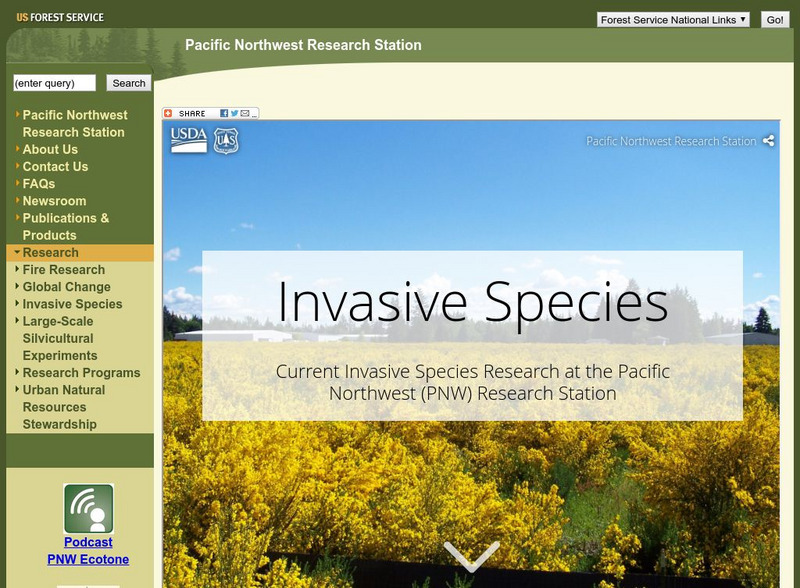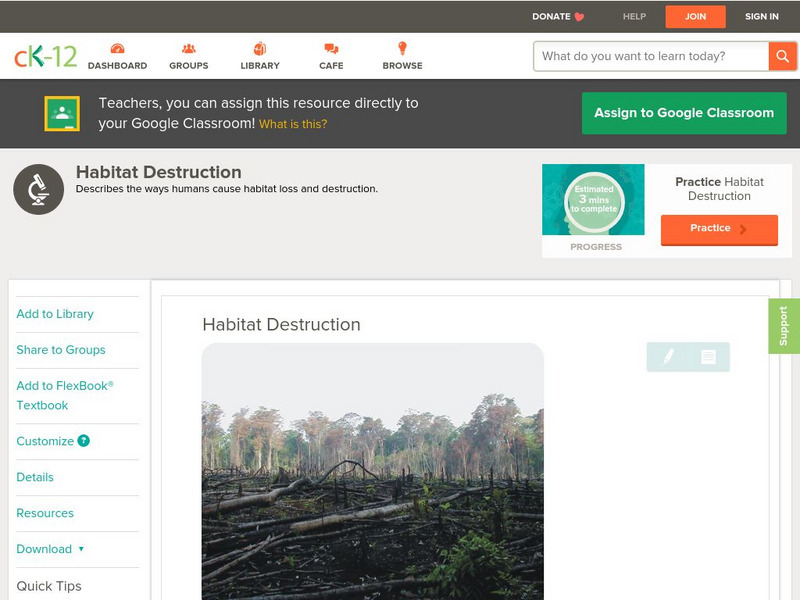Curated OER
Design a Wildlife Habitat-Habitat Detective
Students discuss ways people have changed landscapes and how this effects wildlife. They map the area around their school and keep a journal of wildlife they see. They predict how to preserve the wildlife they see for future generations.
Curated OER
Backyard Habitats
Students identify habitat elements. They create a habitat in a backyard, on a balcony, at a workplace, or in a schoolyard and provide the four basic requirements of wildlife survival (food, water, cover, and places to raise young). They...
Curated OER
Soak it up
Learners complete a hands on activity using hard boiled eggs, food coloring, tape, cups, water, and a knife to show how permeability affects animals. In this permeability lesson plan, students complete this activity and learn how...
Curated OER
Household Pests
Sixth graders discover the various habitat requirements for assorted household pests from ants to wasps. They conduct various activities including researching the life cycles moths, cockroaches, and mosquitoes
Curated OER
SHOW 303: The Channel Island Fox
Learners explore how archaeologists and other scientists use different clues to piece together a picture of the past. Students perform activities that allow them to conduct three types of scientific research. They discuss their...
Curated OER
Trash Count
Students identify pollution around their local community. They discuss the sources of polution and categorize objects based on their properties. They discover ways to make changes to the environment and how to inform the public.
Curated OER
Loss of Wetlands: Subsidence
Students observe subsidence and the effect it has on wetlands with a classroom demonstration. They think about the impact of global warming and the sea level and how it affects the marsh.
Curated OER
Animals of the Arctic
Young scholars discover the animals that make the Canadian Arctic their home. In this Arctic animals lesson, students research the animals that live in the region and create posters that feature their findings.
Curated OER
Tortoise Tales
Students read journal entry from a Gal??pagos field researcher, find examples of five ecological relationships (competition, predation, parasitism, mutualism, and commensalism) and take notes on the details they find in the entry using a...
Curated OER
Patterns and Adaptations in Plants and Animals
Fourth graders conduct research about some of the regions of Texas. They compare plants and animals to identify different adaptations. The statistics of survival rates are measured for changes.
Curated OER
Puerto Rican Parrot Paradise
Students investigate the environment of the Puerto Rican Parrot. They visualize the ecosystem with and without information. They conduct research to find information and participate in classroom discussion to demonstrate comprehension of...
Curated OER
Investigation 11 - Utah Fish
Fourth graders examine a particular Utah fish and then create a poster that shares what they learned. They access websites imbedded in this plan to aide them in their research.
Curated OER
Living with Manatees
Young scholars research the lives of manatees and how humans are contributing to their survival. They visit a variety of websites including a webcam.
Curated OER
Saving Hawaii
Students engage in a lesson plan about the a proposal for a sanctuary in the Northwestern Hawaiian Islands. They write a letter to the President of The United States in opposition to the proposal based upon classroom activities and...
Curated OER
Water Quality Survey: Monitoring the Sustainability of Pigeon Creek
Students research the History of Pigeon Creek (or any watershed in your area). In this environmental science lesson plan, students conduct field tests such as pH and nitrates. They collect data and compare what they collected with other...
Curated OER
Communication in Bees
Eighth graders identify and interpret a scientific investigation and a hypothesis through experimentation and testing a hypothesis. They identify what scientists hypothesized about the communication of stingless bees. Finally, 8th...
US Forest Service
United States Forest Services: Pacific Northwest: Invasives
This resource details the non-native plant and animal species that have become invasive to the ecosystem of the Pacific Northwest. Topics include the impact of invasive species and how they become part of a new environment.
Environmental Education for Kids
Eek!: Teacher Resources: Identifying Alien Invaders
In this lesson, students will identify native and exotic plant and animal species through observation and research, and identify the effects of introduced species on ecosystems.
CK-12 Foundation
Ck 12: Life Science: Habitat Destruction
[Free Registration/Login may be required to access all resource tools.] From a human point of view, a habitat is where you live, go to school, and go to have fun. Your habitat can be altered, and you can easily adapt. Most people live in...
Curated OER
Unesco: United States of America: Olympic National Park
Located in the north-west of Washington State, Olympic National Park is renowned for the diversity of its ecosystems. Glacier-clad peaks interspersed with extensive alpine meadows are surrounded by an extensive old growth forest, among...


















